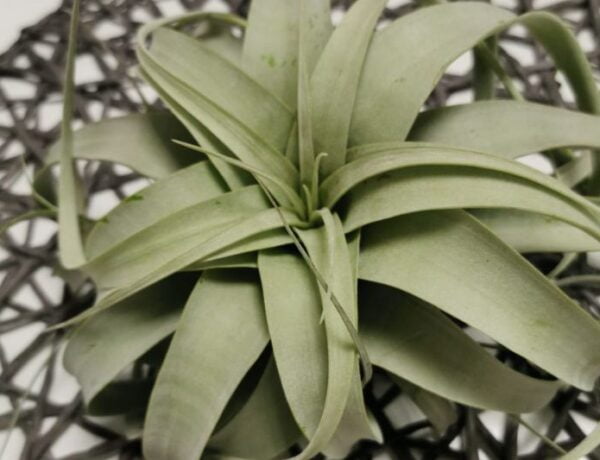Parsley is more than just a garnish on your plate; it’s a versatile herb that can bring vibrant flavor and nutrients to a variety of dishes. Growing parsley indoors is an excellent choice for gardeners who want to have fresh herbs year-round. This article provides a comprehensive guide to growing, caring for, and harvesting parsley in the comfort of your home.
Table of Contents
1. General Information & Taxonomy
| Scientific name: | Petroselinum crispum |
| Common names: | Parsley, Garden Parsley |
| Native to: | Mediterranean |
| Toxicity: | Non-Toxic to Humans and Pets |
| Mature size: | 12 to 18 inches |
| Category: | Herb |
| Growth Rate: | Moderate |
| Hardiness: | Zones 5-9 |
| When to plant it indoors: | Any time of the year |
| Culinary uses: | Garnishing, Salads, Soups, Sauces |
| Medicinal uses: | Diuretic, Anti-inflammatory, Rich in antioxidants |
2. Growing Parsley Indoors from Seeds
Seedling Care
- Preparation: You can choose between a larger pot, multiple small pots or a seed tray with drainage holes. Fill the container of your choice with a quality potting mix, leaving about an inch of space from the top.
- Planting: Sow the parsley seeds on the surface of the soil, spacing them approximately 2-3 inches apart. Lightly cover the seeds with a thin layer of soil.
- Location: Place the container in a location where it can receive indirect light. If natural light is insufficient, you can also use grow lights.
Germination Time
- Parsley seeds typically take between 14 to 21 days to germinate. Keep the soil moist but not waterlogged during this period.
Optimal Soil for Germination
- A well-draining potting mix rich in organic matter is ideal for parsley. The soil should have a pH level between 6.0 and 7.0.
After Germination
- Once the seedlings emerge and develop two sets of true leaves, thin them out so that each seedling has its own space, or transplant them into separate pots.
3. Growing Parsley Indoors from Cuttings
How to Take a Cutting
Select a healthy branch that has at least two nodes. Use a sharp pair of scissors or a knife to cut the branch at a 45-degree angle.
Rooting Process
- Water Rooting: Place the cutting in a jar of water, making sure that the nodes are submerged. Change the water every few days to keep it fresh.
- Soil Rooting: You can also plant the cutting directly into a pot filled with well-draining soil. Water it lightly and place it in indirect light.
Root Development
- Whether you choose water or soil rooting, it usually takes 2-3 weeks for a good root system to develop. Keep the cutting in a warm location with indirect light during this period.
Transplanting
- Once the water roots are well-developed, transplant the cutting into pots, using the same type of soil and light conditions recommended for growing parsley from seeds.
4. Parsley Care & Growing Requirements Indoors
» Watering
To keep your parsley healthy indoors, water it when the top inch of the soil feels dry to the touch. It’s important to avoid overwatering, as it can lead to root rot. Also make sure to avoid splashing the foliage, which can lead to fungal issues.
» Light
Parsley thrives in bright, indirect sunlight, requiring at least six hours per day for optimal growth. If you can’t provide enough natural light, especially during the shorter days of winter, consider using grow lights as an alternative.
» Soil
For parsley to grow well indoors, use a well-draining, loamy soil mix with a pH level between 6.0 and 7.0. You can also use a standard potting mix and add organic compost to improve drainage and quality.
» Temperature
Maintain a consistent indoor temperature between 65-75°F (18-24°C) for your parsley to grow well. If you’re growing this herb indoors during the winter, make sure to keep it away from cold drafts, radiators, and heating vents.
» Humidity
Parsley prefers moderate humidity levels. If the indoor air is too dry, especially during winter when indoor heating systems are on, you can increase humidity by using a humidity tray filled with water and pebbles beneath the pot.
» Fertilizer
To provide the nutrients parsley needs for robust growth, use a balanced, all-purpose liquid fertilizer diluted to half the recommended strength every 4-6 weeks.
5. When and How to Harvest Your Parsley

» When to Harvest
Your parsley plant is ready for harvest when it has grown at least three segments of leaves. It’s best to harvest in the morning, as this is when the leaves are at their peak oil and flavor content.
Usually, you could start seeing it reach this stage as early as 70 to 90 days after planting from seed.
» How to Harvest
When harvesting parsley, you should not remove more than one-third of the plant at one time. Taking too much can stress the plant and affect its ability to regrow.
Use a pair of sharp, clean scissors or garden shears to ensure a clean cut. Snip the leaves or stems close to the ground level, focusing on the outer segments first, as they are the most mature.
» Post-harvest Care
After harvesting, it’s important to give your parsley plant some extra attention to ensure it continues to grow and produce new leaves. Start by checking the soil moisture and water the plant if the top inch of soil feels dry.
Inspect the plant for any signs of disease or pest activity, such as yellowing leaves or holes. If you notice any issues, treat them promptly to prevent them from spreading.
Conclusion
Growing parsley indoors is quite straightforward and with the right care, its rewards are quite generous. Beyond parsley, you can also add other easy-to-grow herbs to your indoor garden like sage, basil, mint, and chives.






No Comments